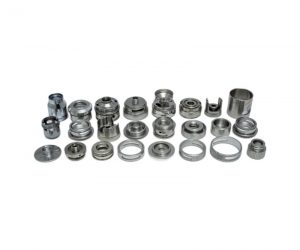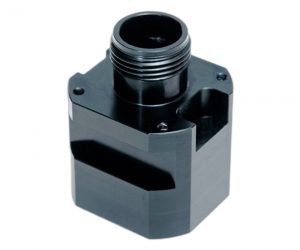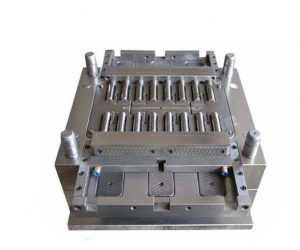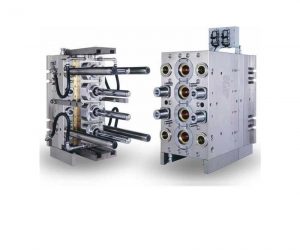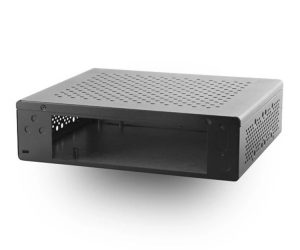The future of MIM is not merely an extrapolation of current trends; it is a realm of unforeseen possibilities. As research pushes the boundaries of materials science and manufacturing technology, we can anticipate the emergence of entirely new MIM applications, challenging our current understanding of what is achievable. The ongoing convergence of MIM with other advanced manufacturing techniques, such as additive manufacturing and nano-manufacturing, promises a future where component complexity and performance reach unprecedented levels. The key to unlocking this potential lies in fostering collaboration across disciplines, encouraging interdisciplinary research, and embracing a culture of continuous innovation.
I. The Genesis and Evolving Sophistication of MIM
MIM's origins in the 1970s represent a pivotal moment in manufacturing history. The convergence of powder metallurgy and injection molding technologies, initially a seemingly audacious undertaking, yielded a process capable of producing intricate metal components with unprecedented precision and efficiency. This wasn't merely an incremental improvement; it was a paradigm shift. The initial limitations of feedstock rheology and sintering control, once significant hurdles, have been progressively overcome through advancements in material science, process engineering, and sophisticated modeling techniques. The evolution of MIM reflects a continuous interplay between fundamental research and practical application, pushing the boundaries of what's considered feasible in high-precision metal component fabrication. This iterative refinement has cemented MIM's position as a cornerstone of modern manufacturing, particularly for high-volume production of complex geometries.
II. The Material and Process Science Underlying MIM's Success
A. Feedstock Formulation: A Symphony of Material Properties: The selection of metal powders is far from arbitrary. It requires a nuanced understanding of powder metallurgy, encompassing particle size distribution, morphology, chemical composition, and their influence on the final component's microstructure and mechanical properties. The binder system, a critical component of the feedstock, demands meticulous control over its rheological behavior to ensure optimal mold filling and part density. This intricate interplay of material properties necessitates advanced characterization techniques and sophisticated modeling to predict and control the final product's attributes. The choice of alloy system, often a proprietary blend, is dictated by the application's specific performance requirements, leading to a wide range of specialized feedstocks tailored to diverse industrial demands.
B. Injection Molding: Precision Under Pressure: The injection molding phase transcends the simplicity of its plastic counterpart. The high viscosity and non-Newtonian behavior of the metal-binder slurry demand precise control over injection parameters, including injection pressure profiles, melt temperature, and mold cavity geometry. Advanced simulation tools, incorporating computational fluid dynamics (CFD) and finite element analysis (FEA), are essential for optimizing the process and minimizing defects such as porosity and warping. The mold itself is a marvel of engineering, constructed from high-temperature alloys or ceramics, demanding stringent tolerances and surface finish to guarantee dimensional accuracy and surface quality.
C. Sintering and Post-Processing: Transforming Powder to Performance: Debinding, the removal of the organic binder, is a critical precursor to sintering, the high-temperature process that fuses the metal particles. This step demands precise control over atmosphere, temperature gradients, and heating rate to prevent defects like cracking and shrinkage. The sintering process itself is highly sensitive to the alloy system and part geometry, requiring a deep understanding of phase transformations and diffusion kinetics. Post-processing, encompassing machining, heat treatments, and surface finishing, further refines the component's properties, tailoring its performance to the specific application. These steps often involve specialized techniques like selective laser melting (SLM) or electron beam melting (EBM) for localized property modification.
III. MIM Production Methodology: A Holistic Approach to Manufacturing Excellence
A. Design for Manufacturability (DFM): Bridging Design and Production: Designing for MIM necessitates a departure from conventional design practices. The inherent limitations of the process, such as draft angles, minimum wall thicknesses, and undercuts, must be carefully considered. Close collaboration between design engineers and MIM specialists is paramount to ensure manufacturability and cost-effectiveness. This iterative design process often involves design optimization software and rapid prototyping techniques to validate design choices and minimize iterations.
B. Mold Construction: The Foundation of Precision: MIM mold construction is a complex and specialized undertaking, requiring advanced machining techniques and materials selection. The molds are subjected to extreme thermal and mechanical stresses during the injection and sintering cycles, demanding high durability and precision. The mold design itself is critical, incorporating features like ejector pins, cooling channels, and gating systems designed to optimize material flow and minimize defects. Regular maintenance and inspection are crucial to maintain mold integrity and ensure consistent part quality.
C. Quality Assurance and Control: A Multi-Layered Approach: Stringent quality control is integral to MIM's success. This encompasses comprehensive incoming material inspection, in-process monitoring using techniques like X-ray inspection and dimensional metrology, and final part inspection using advanced techniques such as coordinate measuring machines (CMMs) and destructive testing. Statistical process control (SPC) is employed to identify and mitigate process variations, ensuring consistent part quality and minimizing scrap rates. The implementation of robust quality management systems, such as ISO 9001, is crucial for maintaining high standards and meeting customer requirements. Traceability and data management are critical for identifying and addressing root causes of defects, continuously improving the process, and ensuring product reliability.
IV. Applications and Case Studies: A Multifaceted Analysis of Metal Injection Molding (MIM)
A. MIM's Transversal Industrial Penetration: The pervasiveness of metal injection molding stems from its capacity to address the unique and often stringent demands of diverse sectors. Its application extends beyond the readily apparent—consumer electronics and medical devices—to encompass mission-critical components in aerospace and defense, where failure is not an option. The technology's efficacy in producing intricate geometries with exacting dimensional tolerances is further exploited in the automotive, industrial machinery, and sporting goods industries, driving innovation through high-performance, customized part fabrication. The inherent scalability of MIM allows for both high-volume production runs and the creation of highly specialized, low-volume components, further augmenting its industrial relevance.
B. Illustrative Successes and Paradigm Shifts: The transformative potential of MIM is vividly illustrated by its successful deployment in various high-stakes applications. The creation of complex, biocompatible implants that significantly improve patient outcomes exemplifies the technology's impact on healthcare. Similarly, the fabrication of lightweight, high-strength components for advanced aerospace systems underscores MIM's contribution to pushing technological boundaries. These case studies serve not merely as anecdotal evidence, but as compelling demonstrations of MIM's ability to overcome limitations inherent in traditional metalworking techniques, thereby enabling the development of previously unattainable designs and functionalities.
C. Engineering Excellence in Demanding Applications: The true measure of MIM's capabilities lies in its performance within high-performance, high-consequence applications. The precision components integral to cutting-edge medical devices and the mission-critical parts employed in aerospace and defense systems demand exceptional dimensional accuracy, superior mechanical properties, and unparalleled design flexibility. MIM consistently delivers on these stringent requirements, a testament to the advanced materials science, rigorous process control, and unwavering commitment to quality assurance that characterize the field. The ability to consistently produce components that meet or exceed the most demanding specifications underscores the technological maturity and engineering prowess of MIM.
VI. Business Strategies and Market Dynamics: Navigating the Competitive Landscape
A. Competitive Advantages: A Strategic Assessment: MIM's success in the modern manufacturing landscape is a direct consequence of its inherent competitive advantages. The unique synergy between the precision and efficiency of injection molding and the inherent strength and versatility of metals positions MIM as a highly attractive manufacturing solution. This is further enhanced by its capacity to produce complex, near-net-shape parts with exceptional dimensional accuracy, coupled with cost-effectiveness in high-volume production. The increasing emphasis on sustainability further strengthens MIM's market position, making it a preferred choice for organizations prioritizing environmentally responsible manufacturing practices.
B. Global Market Trends and Future Opportunities: The dynamic global manufacturing landscape, shaped by technological advancements, evolving consumer preferences, and sustainability concerns, presents significant opportunities for MIM. The growing demand for lightweight, high-performance components in sectors like automotive and aerospace, the increasing focus on personalization and customization, and the expansion of the medical and healthcare industries all contribute to the expansion of the MIM market. The seamless integration of MIM with Industry 4.0 principles and smart manufacturing strategies further solidifies its position as a critical enabler of next-generation manufacturing capabilities.
C. Scalability and Customization: A Dual-Faced Advantage: A key differentiator for MIM is its inherent scalability. The technology adeptly handles both high-volume mass production and highly customized, low-volume runs. Advanced automation, optimized workflows, and continuous process refinement ensure cost-effective, consistent, and reliable part delivery at scale. Simultaneously, MIM's design flexibility allows for the creation of fully customized components, catering to niche applications and specialized markets. This dual capability—mass production and bespoke customization—is a significant competitive advantage, positioning MIM as an indispensable partner for manufacturers seeking to optimize innovation and efficiency.
VI. Addressing the Challenges of MIM: Technological, Economic, and Environmental Considerations
A. Technical Hurdles and Standardization: Despite its remarkable capabilities, MIM faces ongoing technical challenges. The complex material science involved in feedstock formulation, the precise control of injection molding and sintering processes, and adherence to evolving industry standards demand continuous innovation and vigilance. Addressing these challenges requires a commitment to materials research, process engineering, and rigorous quality assurance, ensuring that MIM components consistently meet or exceed the most stringent performance and safety requirements.
B. Economic Viability and Cost Optimization: While cost-effective, especially in high-volume production, MIM's inherent complexity presents economic challenges. Significant upfront investments in specialized equipment and tooling, coupled with operational costs associated with energy-intensive processes and material procurement, necessitate continuous optimization of workflows, supply chain streamlining, and the exploration of innovative cost-saving strategies. A data-driven, continuous improvement approach is crucial for maintaining long-term economic viability and profitability.
C. Environmental Stewardship and Sustainable Practices: Growing environmental concerns necessitate a focus on sustainable practices within the MIM industry. The energy-intensive nature of sintering, potential waste from metal powder production, and part finishing necessitate the adoption of eco-friendly practices. Investing in renewable energy, implementing robust recycling and waste management programs, and exploring environmentally friendly materials are crucial steps toward minimizing the environmental impact and establishing MIM as a responsible and sustainable manufacturing technology.
VII. Cutting Edge and Future Prospects: A Paradigm Shift in Metal Injection Molding
A. Emerging Technologies: Beyond Incremental Improvements
The metal injection molding (MIM) landscape is undergoing a radical transformation, propelled not by incremental advancements, but by a confluence of disruptive technologies. Advanced simulation, far exceeding simple FEA, now incorporates multi-physics modeling, predicting microstructural evolution and defect formation with unprecedented accuracy. The integration of AI and machine learning extends beyond process optimization; these algorithms are actively involved in material design, predicting optimal powder compositions and binder systems for specific application requirements, even anticipating and mitigating unforeseen process instabilities. Additive manufacturing's role transcends mere supplementation; hybrid MIM-AM processes, employing 3D printing for intricate features integrated within larger MIM-produced components, are emerging as a dominant paradigm. This necessitates a fundamental rethinking of design for manufacturing (DFM) principles.
B. Anticipated Innovations: A Convergence of Disciplines
The future of MIM hinges on a synergistic convergence of materials science, process engineering, and advanced manufacturing technologies. We anticipate breakthroughs in binder systems, moving beyond traditional polymers towards bio-based, self-healing, or even degradable alternatives, addressing sustainability concerns. The development of novel metal powders, incorporating nano-structured additives or employing advanced alloying strategies, will unlock unprecedented mechanical properties, pushing the boundaries of strength-to-weight ratios and high-temperature performance. Simultaneously, advancements in sintering technologies, such as microwave or laser sintering, promise to significantly reduce cycle times and energy consumption, while enhancing densification and microstructural control. This requires a fundamental shift towards closed-loop control systems, integrating real-time process monitoring and adaptive control algorithms.
C. Industry 4.0 and Beyond: The Intelligent MIM Factory
The integration of Industry 4.0 principles within MIM is not merely an adoption of existing technologies; it represents a fundamental shift towards a fully interconnected and autonomous manufacturing ecosystem. Digital twins of MIM processes, capable of predicting and optimizing performance in real-time, are becoming a reality. This necessitates a robust data infrastructure, capable of handling the massive datasets generated by advanced sensors and process monitoring systems. The concept of the "dark factory," characterized by minimal human intervention and maximized automation, is rapidly approaching feasibility within the MIM sector. This requires a paradigm shift in workforce training and development, focusing on data analytics, AI integration, and advanced process control. The challenge lies not just in implementing these technologies, but in developing the robust cybersecurity measures necessary to protect the intellectual property and operational integrity of these sophisticated systems.
VIII. Conclusion: MIM's Enduring Legacy and Uncharted Territories
A. A Transformative Force in Advanced Manufacturing
MIM's enduring success stems from its unique ability to bridge the gap between the design freedom of near-net-shape manufacturing and the high-performance characteristics of traditionally manufactured metal components. Its adaptability to a wide range of materials, coupled with its inherent precision and cost-effectiveness, positions it as a cornerstone of advanced manufacturing across diverse sectors, including aerospace, medical devices, and automotive. However, the challenges lie in addressing the limitations of current MIM technologies. Further research into material limitations, process optimization, and the integration of emerging technologies will be crucial for maintaining MIM's competitive edge.
